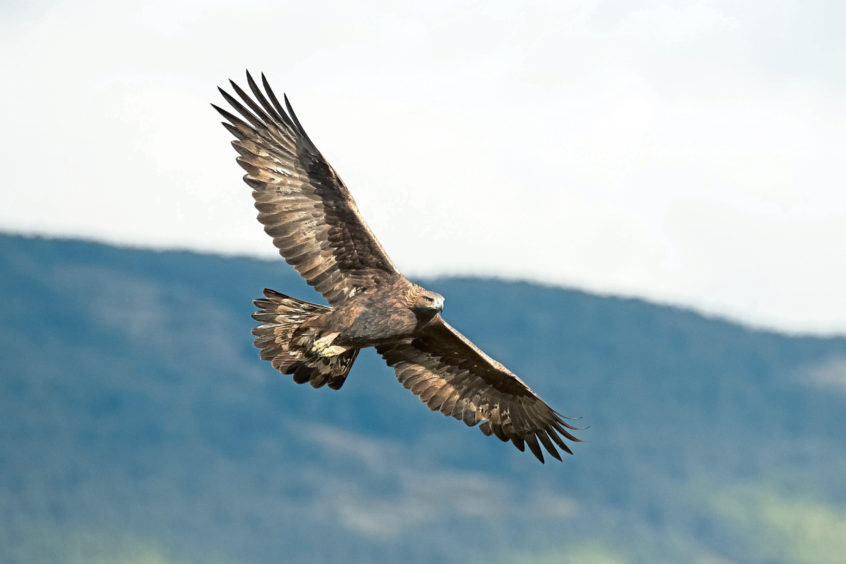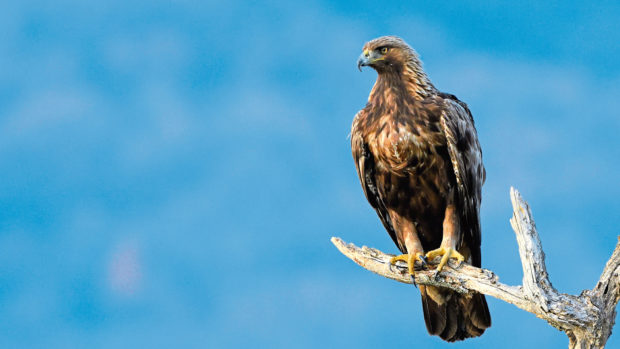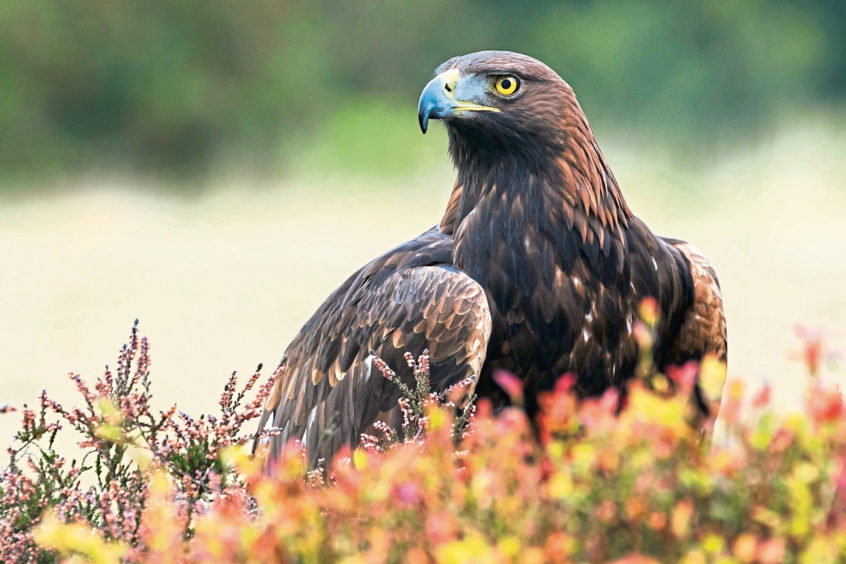For several years it had become an almost compulsive habit in early January to visit a lonely glen on the fringes of the Cairngorms to check how “my” eagles were doing. It may have only been the turn of the year, and the weather was often cold and snowy, yet already these birds were thinking about breeding.
From a vantage point high on a slope on the far side of the glen, and far enough away to avoid disturbance, I could look through my binoculars across at the distant eyrie perched on a small jutting crag on the other flank. Occasionally, it was possible to discern the fresh greenery of pine needles from sticks recently placed by the birds, a clear sign that the first preparations for egg laying in March had begun in earnest.
The eagles only bred in this crag eyrie every second or third year, utilising another eyrie in a nearby Scots pine at other times and not breeding at all in some years, although it is possible they had another nest in the area that I hadn’t found. Such nest rotation is typical of golden eagles and they often have two or three eyries in their territory.
Golden eagles begin courtship at this time of year, which includes an undulating territorial display flight and even rolling upside down with legs extended. Jeff Watson in his excellent monograph of the golden eagle recounted one fascinating instance where the male bird rose into the air a carrying a small rock. He circled upwards and then dropped the rock, entered a steep dive and caught it before it struck the ground. This action was repeated before the female took to the air to join him, herself carrying a clod of earth that was dropped and caught in the same manner. Such behaviour might be a signal of the birds’ prowess and skill in catching prey, and thus a useful indicator of mate suitability.

The great 20th century Scottish naturalist, and golden eagle expert, Seton Gordon, wrote: “Most of the eagle’s courtship is aerial, and consists of superb aerobatics, both male and female taking an equal part. The male may swing over the female with wings raised, or he may stoop at and chase her”.
The eagle is widely regarded as one of our supreme predators; all power and strength, thriving on a diet of large prey items such as mountain hares, red grouse and ptarmigan.
While this is certainly true, the golden eagle can also hunt in a rather more undramatic manner should the opportunity arise. I once encountered a male eagle in an Angus glen that had adopted the unorthodox tactic of hunting on foot. The resourceful bird had found a colony of spawning frogs and was wading through the shallow boggy pools and gulping the amphibians down with gusto!
Info
Golden eagles lay their two eggs in March with the young not leaving the nest until July. They are found throughout the Scottish Highlands and Hebrides.











